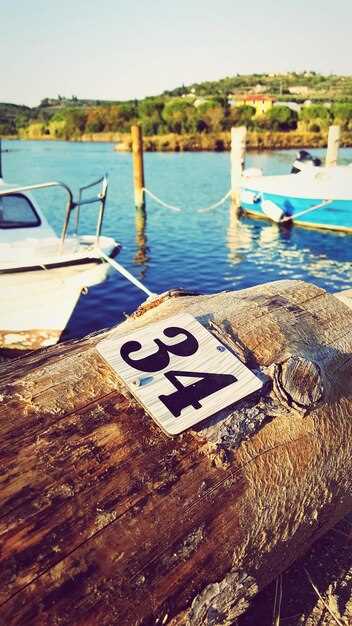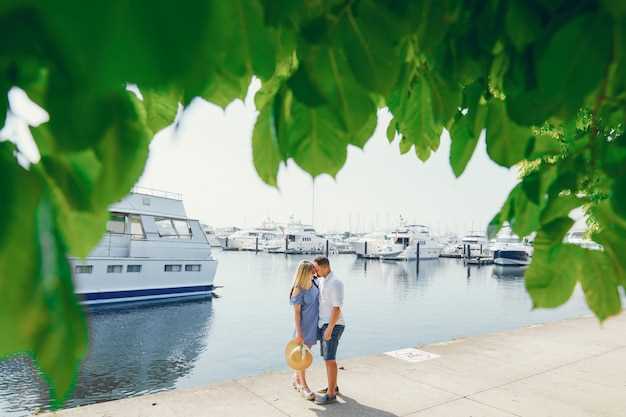Recommendation: plan the core charter window by destination: May through September in the European Mediterranean and Aegean, and November through April for Caribbean, Bahamas, and Pacific routes. Booking within these blocks minimizes risk, keeps rates predictable, and preserves port schedules. For most charters, 7–12 days work well, almost always with a little flexibility to adjust over weather and port calls.
In the Mediterranean, a wide array of coastlines offers a deep massif backdrop, with a core window May–October. May and September deliver comfortable seas and thinner crowds, while July–August drive demand and higher rates. Shoulder months April and October provide room to plan with limited weather risk; closely monitor crew and port availability to unlock spare berths.
Caribbean and Bahamas present a different rhythm. The peak runs December to February; November and April are shoulder months with good conditions and lighter winds. The hurricane season limits options in late summer, but May through October can yield strong value if you accept occasional showers. Supplies on board must be arranged in advance, and onshore hotel stays adjust to demand. Rates reflect island constraints and international connections; a backup plan helps prevent travel hiccups. Weather and port changes can force adjustments, so keep a flexible schedule.
Asia and the Indian Ocean follow distinct clocks. The Maldives and Seychelles shine in the dry seasons from November to April, with clear skies and emerald atolls. For Bali and parts of Indonesia, the dry season runs May through September, with a shorter shoulder in April and October. An array of ports and island stops gives guests room to enjoy a balance of on-board luxury and onshore exploration. Bulgari amenity kits can be arranged to elevate turn-around days, adding a touch of hotel-level service to the black-night backdrop of longer passages.
Pacific islands such as Fiji and Tahiti follow a broad window from May to October for steady trade winds. In some years a massif front can bring rain, so plan with a margin. A well-managed schedule keeps the crew aligned, offers an array of ports, and focuses on supplies, safety, and comfort. If you want to keep costs in check, secure fixed rates and pre-arrange provisioning–this helps prevent last-minute surges and boosts enjoyment at sea.
With these timelines, coordinate your crew, supplies, and hotel partners to align rates, room readiness, and port permissions. A clear plan lets you enjoy a seamless charter, delivering a well-timed season that matches your dream itinerary.
Season Length and Operational Windows in the Cyclades
Recommendation: Target May–October for Cyclades charters; May or September shoulder months offer smoother seas, reliable berthing options, and lighter occupancy. For year-round options, plan islands with protected anchorages and shore power access in mind, but expect limited service in winter.
Season length and weather patterns shape schedules. In the central Cyclades, peak activity runs roughly from May through October, with many operators pausing in late October and resuming in spring. A minority of vessels keeps a light schedule into November on longer routes or in milder years.
Meltemi gusts drive routing decisions in midsummer. July and August bring stronger northers, impacting hops between Paros, Naxos, Mykonos, Milos, and Santorini. In May, June, September, and October, calmer air allows longer hops and more predictable schedules.
Operational windows: In high season, major harbors in the central Cyclades handle berthing daily from dawn to late evening; shoulder months offer more flexibility and easier docking. Provisioning runs and crew changes cluster around these months, while winter routines scale back to essential services on the largest islands.
Anchor strategy: jagged coastlines create many anchorages and bays. Seek options with sandy bottoms near villages to access fuel, water, and island life. On days with rough seas, consider a marina stop in Paros or Naxos; outside of the main season, support options decline and some quays reduce services.
nikki notes emphasize that year-round stays exist mainly on the bigger islands with regular ferry connections and staffed ports. For a unique plan, pair stops on Paros, Naxos, Syros, Milos, and Santorini to balance scenery, beaches such as sands along the coast, and efficient provisioning. A well-timed itinerary minimizes long hops during the peak months and preserves flexibility during shoulder periods.
Best months to charter in the Cyclades
The best months to charter in the Cyclades are May and September, when the winds stabilize, humidity is comfortable, and crowds are thinner.
In May, average meltemi pushes sails at 15–20 knots, swell stays light, and anchorages around Paros and Naxos offer generous mooring. Daytime temperatures hover in the mid-20s to high-20s Celsius, making midday sailing pleasant and evenings comfortable while amenities on modern vessels feel fresh after the winter layup.
In September, winds remain reliable at roughly 14–20 knots, seas are gentle, and water stays warm around 23–28°C. The shoulder crowds open up harbor towns for leisurely meals, and attractions–from ancient sites to island beaches–are easier to enjoy without peak-season pressure.
Reserve early through acquera to lock in preferred vessels and cabin layouts. Look for boats with up-to-date navigation technology, solid safety gear, and reliable connectivity so you can plan a smooth course and keep the crew comfortable throughout the trip.
An efficient sailing course runs from Mykonos south toward Paros, Naxos, and Syros, with anchorages along the way that protect you from any light swell. Experienced crews and well-maintained vessels handle daily pushes of wind with confidence, while onboard amenities ensure a relaxed touch between island hops.
The Cyclades carry heritage and tradition in every harbor, from wind-washed hilltops to whitewashed walls. A day on Delos or a quiet afternoon in a protected cove adds a touch of history to your itinerary, and the scene grows even richer with sahara-like sunsets that blaze across the water alongside modern marina technology.
During the height of summers, heat and humidity rise and marinas grow busy. If you want a balance of weather, crowds, and value, May or September remain the strongest choices for a yacht charter season in the Cyclades.
Meltemi wind impact: timing and sailing tactics
Plan to start after sunrise and finish by mid-afternoon when the northerly Meltemi typically strengthens, making 20–30 knots common and gusts higher in peak season. Use an hour-by-hour forecast to track shifts and select routes that keep water smooth and the yacht inside protected coves when wind rises.
In practice, reef early, drop to a smaller headsail, and trim to keep the boat balanced as gusts arrive. Favor a beam or close reach along islands where lee shores reduce chop, and avoid sailing close to shore when gusts intensify. If a gust hits, ease sail area and steer to the lee side to maintain control and keep the ride comfortable. Watch water depth and shoals to avoid grounding and monitor sea conditions and currents to adjust course as needed.
Popular itineraries for private charters and clubs include island-hopping with family-friendly anchorages near tavernas and harbor promenades. Celebrity crews appreciate predictable schedules, and the plan involves making and covering miles with downtime for meals, swimming, and life on board for people of all ages, delivering unique experiences.
Forecast updates shape each day: if the northerly winds show a steady rise, shift to shorter hops and protected harbors. For the ultimate sailing experience, combine early-season forecasts with flexible planning and adjust plans hour by hour. In the Pacific, the same wind discipline applies, rewarding careful timing and sail management.
Ideal charter durations by season (7–10 days vs. 14+ days)

7–10 days is the default charter window; 14+ days yields a cultural itinerary across two regions. In november-april, expect calmer pockets in southern routes and plan buffers for weather, while keeping a flexible plan to protect safety and secure sheltered harbors.
In greece, a 7–10 day loop through the Cyclades covers three to four islands, with built-in time for three anchorages and a picturesque spread of sea towns ashore. If your schedule allows, a 14+ day option expands to the Dodecanese or Ionian coast, weaving cultural stops with relaxed sailing.
In the pacific, 14+ days let you connect remote atolls and volcanic islets, using a well-maintained fleet of yachts. The award reflects service quality and safety. A dependable tender helps you explore reefs and beaches up close.
Seasonal winds shape pacing: mistral in parts of the western med can push routes toward sheltered bays, especially in november-april. Between durations, expect to race the clock less and to head to port early when squalls threaten; with good planning, you still enjoy dramatic meets and memorable sunsets.
To maximize value, design itineraries around culture, with visits to markets, museums, and local families, and reserve time for maritime lore. Saunas on board offer a comforting retreat after a day ashore, and safety kits with life jackets and first-aid gear stay ready on every charters. Your plans should include headroom for three or four shore stays and a few picturesque harbors to linger, while everyone from yourself to your guests enjoys smooth sailing and reef explorations, with the crew ready to respond to weather and sea conditions. Our crew loves maritime history and shares it during shore visits. Discuss options with yourself and the captain to tailor the pace to your group’s tempo and preferences.
Booking lead times and supplier availability in peak season

Book 12-18 months ahead for the highest-demand vessels in peak season; 6-9 months covers most standard fleets, but if you want the dream picks, lock in 12-18 months. In the west regions and emirate routes, may-october inventories tighten quickly, so plan early to prevent missed opportunities and price pushes.
Regions and supplier patterns: The west Med and Adriatic see the fastest turnover; noted by brokers, the population of charter clients rises in may-october; top vessels sell out quickly; other regions like Caribbean have a broader spread; offers vary by season; in Emirate coast demand stays high year-round but remains tight for the top 50% of vessels.
How to secure: Build a shortlist of 5-7 picks; contact 3-4 suppliers; ask for written holds; push for flexible dates to expand options; seef a vessel you want, start negotiations immediately; minutes after you receive a favorable offer, confirm with a signed term sheet.
Practical steps to maximize availability: Prepare a concise itinerary, headcount, and a max budget; share such details with brokers to boost interest across regions; example itineraries include Ibiza to Mallorca or a Dubai loop in the emirate; such clarity speeds up responses and helps you lock the vessel before others; Another tip: request a written hold for 48-72 hours; minutes matter, so confirm quickly; beware lies in outdated supplier notes and insist on live confirmation.
Port and marina access: planning around crowds and closures
Book berths well in advance for march and peak windows, and confirm closures with each destination’s marina office at least 14 days ahead; this direct check saves hours of waiting for those sailing to world-famous ports with high popularity and demanding standards.
Start by mapping your route across destinations, then align your schedule with opening hours and gate signals. For those vessels chartering a route through Asia or the Mediterranean, anticipate tight berthing windows at dawn or after sunset, and plan tender transfers to beach landings with warmth and care. Michiel, a seasoned captain, notes that early checks reduce friction between superyachts and service crews, especially when retail, fuel, and maintenance services run on tight clockwork during peak periods.
Crowd patterns cluster around large marinas near popular shorelines, but closures can pop up for fire drills, vessel traffic management, or security exercises. Keep a flexible plan that includes alternative berths and backup tender routes, so you can stay on schedule without losing access to essential maritime services, fuel docks, and marina fuel berths.
- Check opening hours and gate access directly with the marina office and any on-site concierge. Some facilities maintain 07:00–19:00 windows, while others stay open later in high season; verify 24/7 contact options before you arrive.
- Reserve picks for the day’s arrival. If a preferred spot is unavailable, have two backups listed in your plan, including a near-by quay that can accommodate those larger vessels and support crews.
- Coordinate with port control and signal charts. Look for direct communications channels and ensure you have the latest maritime signals and local fire and safety procedures on hand.
- Monitor the retail and services hubs near your berth. If you need chandleries, provisioning, or shipyard services, time your arrival to avoid peak crowd hours and weekend surges.
- Carry a compact contingency kit for minor delays: extra power, fuel vouchers, and a small supply of beach provisions for those beach stops after long hops on the hour-by-hour clock.
- Mediterranean and world-famous hubs: Expect high demand around weekends and public holidays. Book 6–8 weeks ahead for May–September, and lock in a flexible arrival window to dodge peak crowd hours. In March, crowds start to build in key destinations and can tighten quickly as island and coastlines fill up.
- Caribbean and Latin destinations: Peak season plus hurricane-season planning means closures can occur during maintenance windows. Align berthing with forecasted weather patterns and reserve backups in nearby marinas that offer the same standards of service and fuel access.
- Asia and the Far East: Asia’s growing yachting scene offers a mix of world-famous facilities and smaller marinas. Secure slots for those days with heavy traffic near major beach clubs, and verify that tender ramps and launch pontoons stay open during late March cruises.
When a closure interrupts your plan, pivot quickly: switch to a nearby marina with direct access to the same maritime services, or anchor in a designated anchorage if permissible and safe. In some markets, you can pre-arrange shore excursions and housekeeping through the marina’s official channels to maintain momentum without delaying the schedule.
Tips to minimize downtime: keep a digital backup of every berth confirmation, marina contact, and service provider, plus a list of alternative picks. Use live status feeds and notifications from port authorities or regional coordinators. If you are looking for rapid updates, set alerts for changes in gate hours, dockside fire drill notices, and flare signals from nearby vessels; these cues often forecast a shift in access patterns and can help you adjust quickly.
Standards of access differ by region, so plan with flexibility. In highly attended destinations, you may need to stage a day of queuing outside the marina or coordinate with security for a smooth entry, especially when your guest list includes those guests seeking a seamless arrival and early access to beach and retail experiences.
Finally, assemble a simple decision tree for the crew: direct contact at the marina, backup berth, tender transfer plan, and a contingency beach option. This approach keeps your itinerary on track, preserves warmth aboard and ashore, and ensures your chartering schedule remains aligned with the pace of the hour, the crowds, and the closures you’ll encounter across destinations like those noted above.

 How Long Is a Yacht Charter Season – Timelines by Destination">
How Long Is a Yacht Charter Season – Timelines by Destination">